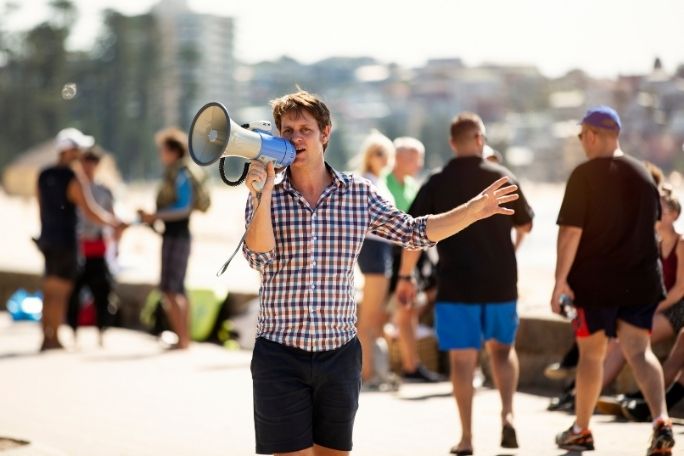Lesson summary
Students explore some of the social and environmental impacts of fast fashion. They begin by reviewing their understanding of the term ‘fashion’ before being introduced to the concept of ‘fast fashion’. Students work collaboratively to explore a range of impacts associated with fast fashion. They then use the 4Rs to generate ideas for addressing the impacts of fast fashion and create a pocket-sized guide to help them make better shopping choices.
Learning intentions:
Students will...
- understand what fast fashion is
- recognise some of the social and environmental impacts of fast fashion
- understand the concept of the 4Rs and understand how it can be applied to fast fashion.
Success criteria:
Students can...
- analyse and respond to images
- use the 4Rs to create solutions
- communicate ideas visually
- work individually and collaboratively
- participate in class and group discussions.
Lesson guides and printables
Curriculum links
Select your curriculum from the options below.
Lesson details
Curriculum mapping
Australian curriculum content descriptions:
Year 5 HASS (Economics and Business):
- Types of resources (natural, human, capital) and the ways societies use them to satisfy the needs and wants of present and future generations (ACHASSK120)
- Influences on consumer choices and methods that can be used to help make informed personal consumer and financial choices (ACHASSK121)
- Develop appropriate questions to guide an inquiry about people, events, developments, places, systems and challenges (ACHASSI094)
- Locate and collect relevant information and data from primary sources and secondary sources (ACHASSI095)
- Work in groups to generate responses to issues and challenges (ACHASSI102)
- Reflect on learning to propose personal and/or collective action in response to an issue or challenge, and predict the probable effects (ACHASSI104)
- Present ideas, findings, viewpoints and conclusions in a range of texts and modes that incorporate source materials, digital and non-digital representations and discipline-specific terms and conventions (ACHASSI105)
Year 6 HASS (Economics and Business):
- The effect that consumer and financial decisions can have on the individual, the broader community and the environment (ACHASSK150)
- Develop appropriate questions to guide an inquiry about people, events, developments, places, systems and challenges (ACHASSI122)
- Locate and collect relevant information and data from primary sources and secondary sources (ACHASSI123)
- Work in groups to generate responses to issues and challenges (ACHASSI130)
- Reflect on learning to propose personal and/or collective action in response to an issue or challenge, and predict the probable effects (ACHASSI132)
- Present ideas, findings, viewpoints and conclusions in a range of texts and modes that incorporate source materials, digital and non-digital representations and discipline-specific terms and conventions (ACHASSI133)
Syllabus outcomes: GE3-4
General capabilities: Literacy, Critical and Creative Thinking
Cross-curriculum priority: Sustainability OI.7, OI.8
Relevant parts of Year 5 HASS achievement standards: Students recognise that choices need to be made when allocating resources. They describe factors that influence their choices as consumers. Students identify individual strategies that can be used to make informed consumer and financial choices. Students develop questions for an investigation about an economics or business issue or event. They locate and collect data and information from a range of sources to answer these questions. They generate alternative responses to an issue or challenge and reflect on their learning to propose action, describing the possible effects of their decision and present their ideas, findings and conclusions in a range of communication forms using economics and business terms.
Relevant parts of Year 6 HASS achievement standards: Students explain why it is important to be informed when making consumer and financial decisions. Students develop appropriate questions to frame an investigation about an economics or business issue, challenge or event. They locate and collect useful data and information from primary and secondary sources. They reflect on their learning to propose action in response to a challenge and identify the possible effects of their decision and present ideas, findings, viewpoints and conclusions in a range of communication forms that incorporate source materials and economics and business terms.
Unit of work: War On Waste – Years 4-6
Time required: 110 mins
Level of teacher scaffolding: Medium – oversee class discussions and lead the class in activities
Resources required
- Device with internet and presenting capability
- Fast Fashion Facts
- Fashion Images
- Interview Tips (optional)
- Student Worksheet – one copy per student
- Survey Tips (optional)
Skills
This lesson is designed to build students’ competencies in the following skills:
- Communication
- Collaboration
- Critical thinking
- Problem solving
Additional info
Cool Australia’s War On Waste lessons have been developed in partnership with Lune Media and with support from the Australian Environmental Grantmakers Network. These lessons have been designed to lead students through a deeper understanding of some of the big issues relating to waste in Australia and to support them to take action to reduce the impact of waste on our environment.


Welcome back!
Don't have an account yet?
Log in with:
Create your free Cool.org account.
Many of our resources are free, with an option to upgrade to Cool+ for premium content.
Already have an account?
Sign up with:
By signing up you accept Cool.org's Terms and Conditions(Opens in new tab) and Privacy Policy(Opens in new tab).